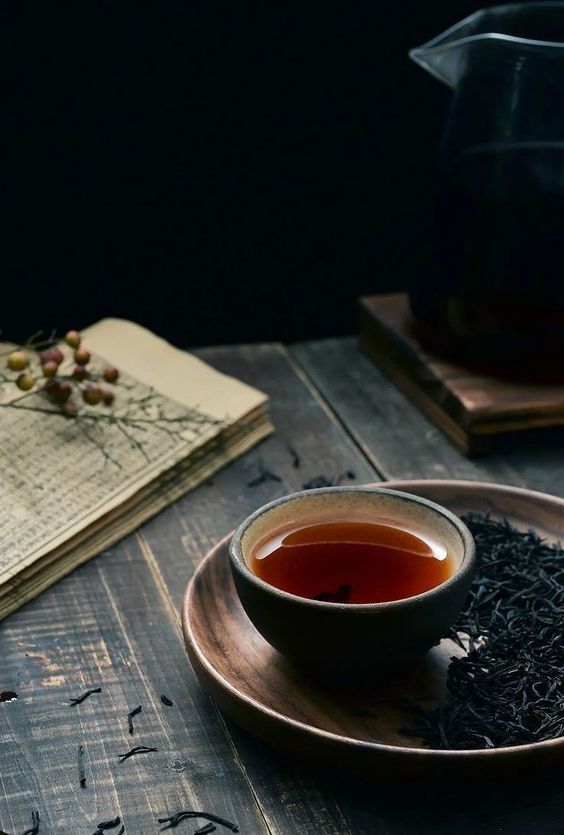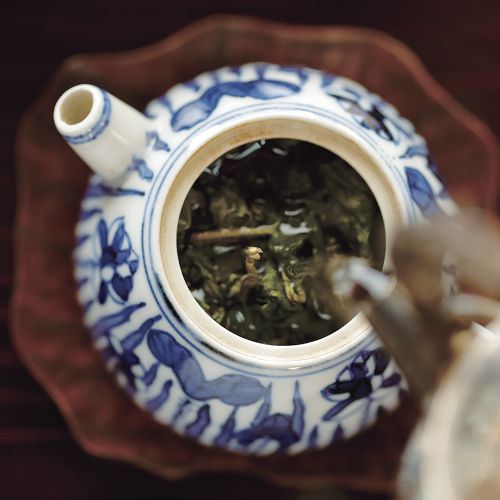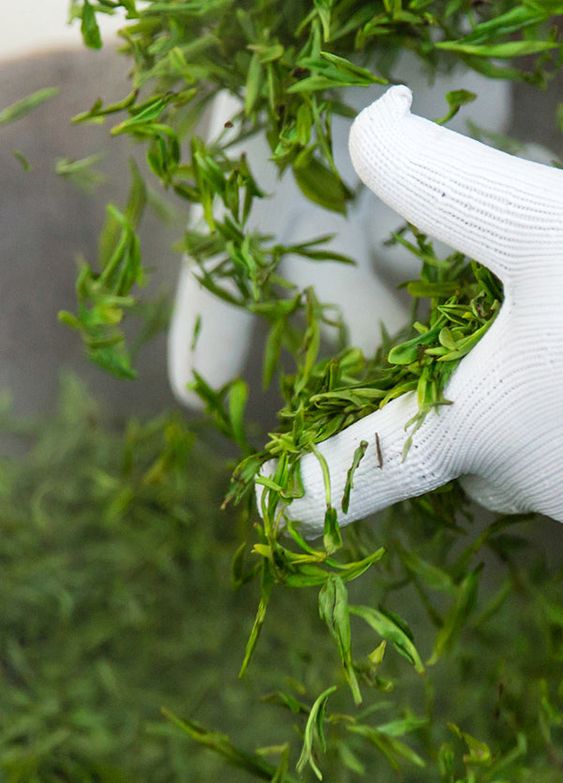Explanation of Chinese Tea Dark Tea
Dark tea belongs to the post-fermentation tea, due to the use of raw materials, in the process of processing and production process of stacking fermentation time is also relatively long, so the leaf color is more dark brown, so it is called dark tea.

What is dark tea?
The Chinese Tea Dictionary defines dark tea as ‘tea species whose raw materials are coarse and old, whose fermentation time is longer during the manufacturing process, and whose finished product is oily dark or dark brown. Dark tea is one of the six major types of tea, and in the past, it was mainly for the border ethnic minorities to drink. Because of an ancient tea-horse road leading to Xinjiang, Tibet, and other border areas, dark tea has the name ‘Tibetan tea’ and ‘border tea’.
Because dark tea has a strong effect on digestion and elimination of food accumulation, research has found that milk and meat-based diets of the border ethnic minorities rarely get ‘three highs’. Therefore, the northwestern ethnic minorities even have ‘rather three days without food, not a day without tea.
Dark Tea Core Producing Areas
According to the geographical distribution of dark tea, it is generally divided into four categories: Hunan dark tea, Hubei old green tea, Sichuan dark tea, and Yunnan-Guangxi dark tea, i.e., the main production areas of dark tea are Sichuan, Guangxi, Hunan, Hubei and so on. In addition, there are Anhui dark tea of ancient Yixian, Shaanxi dark tea (Porcha), and so on.

Hunan dark tea
Hunan dark tea refers to the dark tea produced in Hunan, including Anhua dark tea. Hunan Poria is a very good variety of dark tea, nowadays the production of Poria is generally required to be inoculated with probiotics, and only after the appearance of ‘golden flowers’ can it be shipped out of the factory. The number of golden flowers is one of the important standards to measure the quality of Poria coca bricks. In addition to the health effects of the golden flowers, such as relieving fatigue and clearing blood lipids, they also allow the tea to mellow gradually, creating the fascinating flavor of Poria coco bricks.
Hubei Green Brick Tea
Hubei old green tea, mainly made of green brick tea, using the old green tea tree production, the aroma is special, fungus, jujube, medicine, dumpling leaf fragrance ...... more than one kind of aroma into one, intertwined changes. The soup feeling is not as thick as Pu'er class, six fort tea class, but soft and mellow, smooth and warm.
Sichuan Border Tea
Sichuan side tea and divided into South Road side tea and West Roadside tea two kinds of tea, the finished product is of excellent quality, the simmering resistance to soaking. West road side of the tea raw materials than the South Road side of the tea coarse old, to knife cut the current year or one or two years old tea tree branches and leaves as raw materials, is pressed ‘ambrosia brick’ and ‘square packet of tea’ raw materials!
During the Qianlong period of the Qing dynasty, the provisions of Ya'an, Tianquan, Xingjing and other places produced by the side of the tea specialized in the sale of KangZhou, called ‘South Road side tea’; irrigation county, Chongqing, BeiChuan and other places produced by the side of the tea specialized in the sale of northwestern Sichuan SongPan, Lixian, etc., called ‘West Roadside tea’. Border tea is a tea for Tibetans to drink, which can relieve the physical discomfort caused by living in high altitude, lack of oxygen and low pressure for a long time.

Guangxi dark tea
Guangxi dark tea is mainly Liu Bao tea. Liu Bao tea is divided into loose tea and basket tea. Fresh leaf picking is standard for a bud of three or four leaves, in dark tea is a more tender raw material.
Guangxi Liu Bao tea packaging
Dian dark tea originally refers to the production of Yunnan Pu'er tea, due to the classification of the third edition of the ‘tea production’, Professor Chen rafter from the tea quality systematic and systematic systematic, Pu'er tea in the dark tea category, belongs to Dian Gui dark tea. (At that time, there was no concept of raw Pu-erh tea, which means that Pu-erh tea was classified as dark tea and referred to as Pu-erh ripe tea. (At that time, there was no concept of raw Pu-erh tea, which means that Pu-erh tea was classified under the dark tea category at that time, which referred to Pu-erh ripe tea.) Nowadays, the industry is more inclined to think that Puer is a separate category and does not belong to dark tea.
Discussion question: Is Puer a dark tea?
In March 2003, the Yunnan Provincial Bureau of Standards and Metrology published the standard: Puer Tea is a loose tea and tightly pressed tea made from Yunnan large-leafed sun-green gross tea from a certain area in Yunnan Province after post-fermentation processing. On 17 June 2008, a new national standard for Pu-erh tea was introduced, which defines Pu-erh tea as ‘Pu-erh tea must be made from Yunnan large-leafed sun-blue tea within the scope of the geographical indication protection, and be made by a specific processing technology within the scope of the geographical indication protection.’
Hunan Anhua Fu Brick (Right) Puer Palace Ripe PuerIt is now a common belief that Puer tea does not belong to dark tea, it is a separate category of tea. In terms of the six tea processes, the Puer ripe tea process belongs to dark tea, and Puer raw tea belongs to sun-dried green tea.
